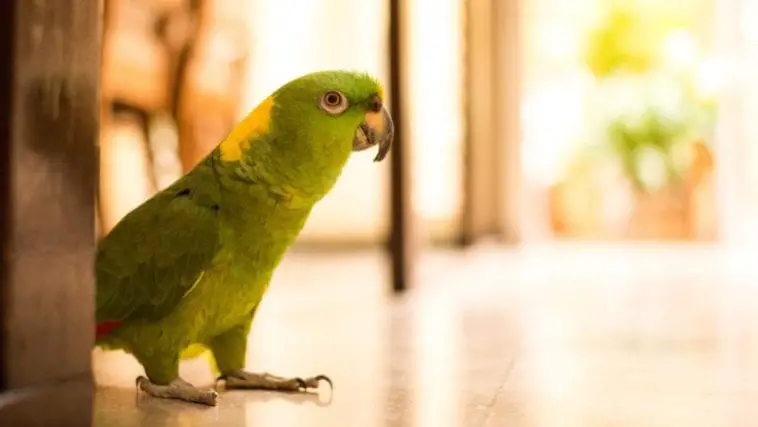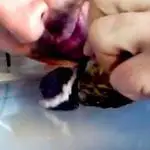The summer is near; it is the perfect time to have some vacation trips, we allow our kids to go and join in a summer camp during weekends at the beach. Having this kind of busy plans, we still don’t forget about our pets. What are we going to do to protect our pets during the hot summer seasons?
Luckily, our pet birds can deal with the heat better than those mammals. Most kinds of birds have a body temperature that ranges from 104 up to 105 degrees Fahrenheit or 40 up to 41 degrees Celsius. Even so, whichever increase over the common body temperature of the parrot might be the cause of heat exhaustion or also known as overheating in our pet birds.
How to Protect Your Parrot From Summer Temperature
Parrots do not usually adjust their temperature just as if the way that human does. They have insufficient sweat glands in their bodies. To adjust the parrot’s temperature, most parrots lose the heat using the evaporation of water by the help of the following:
Dermal Evaporation
Dermal evaporation happens when water through the surface of your parrot’s skin or even its feet evaporates.
Panting
Parrots commonly experience higher respiratory rate or tachypnea or fast breathing by breathing through their mouths. It’s the outcome of the water loss from the exterior part of the parrot’s mouth, nasal passages, and lungs.
Quivering of the Parrot’s Throat Structures
Generally, the summer can be cruel, and carrying out special safety measures could provide you a lot of distress. Most parrots like so much exposure under the light as well as in sunshine. And during summer, enough conservation is necessary, especially from the direct sun exposure except during the early hours of the day or during dusk.
Cage and Your Parrot’s Protection

Establish accommodation is required during the summer season to protect the shelter from the sun and its heat. You may select one of some choices, such as an outdoor cage, an outdoor aviary, or you can select both choices.
Several people would rather have their pet parrot on a perch and providing them a free roam of enclosure like an outdoor screened courtyard. No matter what your circumstances are, your pet parrot is required to have a shaded with a cool place to get away from the burning of sun rays as well as in high temperatures.
Here are some tips to ensure that your parrot’s cage is protected during summer:
- In an aviary enclosure, it is essential to provide a ceiling fan to help the enclosures to keep it clean to prevent some insects and to those unwanted odors.
- You may also provide proper ventilation for your pet, especially in those that are in indoor aviaries that having at least 16 air exchanges every hour.
- It is also a big help in keeping the surroundings cool and comfortable for our pet parrot if we provide an indoor air-conditioned. However, even if you keep your pet parrot under an air-conditioned room, do not remove it permanently outdoors without any advance adjustments. Commonly, parrots do their very well in an indoor cage, and it is an unexpected change of temperature that might cause problems in parrots.
- If you own a breeding pair of parrots, it is essential to put the nesting box in a place that is cool and in a shaded area of the parrot’s cage.
- Always check the young parrots if there are any symptoms of overheating.
- It is also good to have a mister in the cage. Misters can be installed along with a timer so that your parrot can be misted with water often. With the help of misters, it can assist our pet parrot in releasing some of the hearing that is in its skin; it also provides the feathers in good condition, it also helps when it comes to the grooming of parrots, and it enhances coloration.
- You may also install ceiling fans or some fans that are movable to assist when it comes to circulating air in a tropical area, even though it must be turned off during the parrots are released. These fans must be placed strategically, and it is essential to put a protective cover in it.
- Your pet parrot should stay away in a direct and strong airflow or in drafts of its enclosures. You may also change the water at all times, and a birdbath to your pet is a great choice.
- All the water in your pet’s cage must be cool and drinkable. Most of the parrot owners love to have a rotating fountain in their parrot’s aviary to provide their pets a possibility to use it as a bath when it satisfies them.
Importance of Health

Attentive tracking, when it comes to health, is a must to against cover the parrot’s illness. Grooming, cleanliness of the cage, and checking the signs when your parrot is not feeling are important. Lack of grooming is commonly followed by dusting up in a ball and existing very quiet, or it is just sitting on the bottom of its enclosures.
Moderate heat may cause your parrot to pant as manifested with an open beak, and its wings are spread away from its body. There is also a probability that it is just sitting on the bottom of its cage. The mosquitoes might also bite your pet parrot that may lead to severe irritation, and it may even cause anemia in worse case
Protect your pet parrot outdoors with the help of a screen that installed in the enclosures, especially during dusk time. Also, garden chores that include fertilizing as well as sanitizing with the use of pesticides must be done with a great carefulness away from your pet parrot. Take your pet indoors while you are making better your lawn. But, if you are having your own outdoor aviary, just make sure to secure your pet parrots from possible intoxication that may occur.
Feeding Your Pet Parrot

Usually, most parrots do not require much energy during the summer season as they are doing during winter. Just like the common season, continue to provide pellets as a parrot’s primary diet. You may also add some greens with fruit in a compact amount.
Most parrots eat a diet that consists of nuts, flowers, fruits, seeds, buds, and even insects. Generally, seeds are their favored food to eat. Try to reduce the amounts of treats that you are providing them. Furnish them with fresh drinking water at all times in a different container with the water that they used for bathing and routinely check at least once or twice a day to ensure if it contains the right amount.
Veterinary Supervision

During the early symptoms of some illness or during the time that you’re pet may have a sudden change, especially to its behavior, you should take your pet immediately to your veterinarian as soon as possible. If your pet begins to present some signs of illness, it is the time that it is already sick.
Routine or regular physical observation is necessary to assist in determining the condition of your parrot. Your pet will be examined by your vet; they check if there are parasites that are involved, and they treated it if necessary, and at the same time, you may also have their nails clipped often and their beaks trimmed.
Conclusion
Now you are ready to safeguard your parrot against the summer heat by keeping him protected in his cage. Also, it’s important to assess the signs and symptoms of dehydration so as to prevent your pet parrot from getting sick. Consult a veterinarian right away for proper intervention should you observe unusual behavior from your parrots, most especially during summertime.



